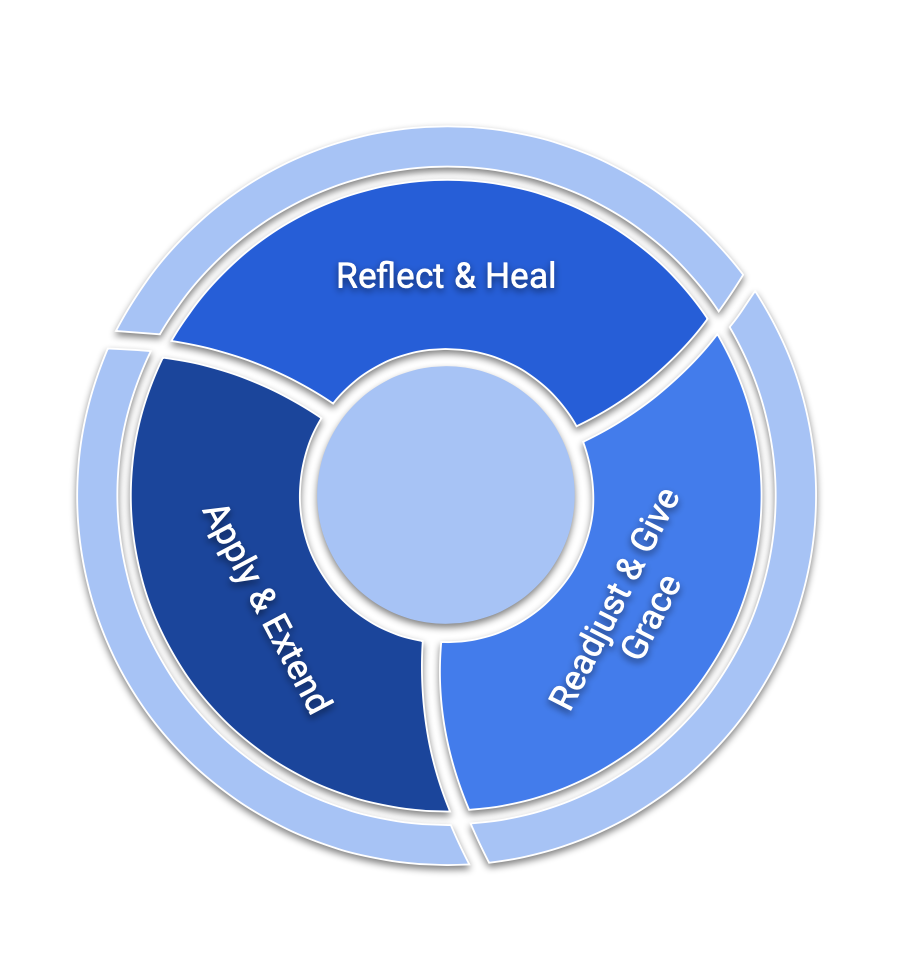Perhaps many can relate to the challenges of not knowing where to start with inclusive teaching. Let’s consider the research. In our study of the barriers that instructors face with regards to implementing inclusive teaching approaches (Addy et al., in press), several themes emerged, including, among others: (1) not having enough knowledge of inclusive teaching approaches and (2) having limited or no opportunity to discuss inclusive teaching strategies with colleagues. The first theme suggests that a focus on the actual practices of inclusive teaching may be of benefit to instructors seeking to be more inclusive in their teaching, and underlies a primary motivation behind why my coauthors and I engaged in writing the book What Inclusive Instructors Do: Principles and Practices for Excellence in College Teaching (Addy et al., 2021). The second theme identified suggests that having more spaces to engage in dialogue related to inclusive teaching can support instructional efforts.
In this blog post I share various initiatives that have the potential to mitigate these barriers that I hope are useful to you and your colleagues. These models are based on: my observations of what others in higher education are doing to support inclusive teaching efforts on their campuses, initiatives that I have coordinated, as well as promising programming based on other effective models.
Informal Strategy Sharing
Primary Goal: To share inclusive teaching strategies
Department and program heads/chairs can set aside time during regular meetings for their instructors to share any inclusive teaching strategies that they are using in their individual courses or across multi-section courses. Additional discussions may also involve the department or program developing their own statement of inclusion highlighting their values and commitments, as well as brainstorming avenues for measuring the impact of their teaching efforts.
Informal strategy sharing sessions can also be coordinated by educational developers at the institution such as through centers for teaching and learning.
Newsletter Showcases
Primary Goal: To increase the visibility of inclusive teaching efforts across campus
Centers for teaching and learning or communications departments can send email blasts to the campus community highlighting the inclusive teaching approaches implemented by instructors across various departments.
Video Shares
Primary Goal: To provide instructors with opportunities to learn how their colleagues are implementing inclusive teaching approaches
Instructors can be asked to describe their inclusive teaching approaches for brief recordings (e.g. 2-5 minutes) that can be shared with the campus community.
Community or Small Group Readings and Discussions
Primary Goals: To foster discussion and reflection around inclusive teaching
As noted in the previously described study (Addy et al., in press), building awareness of learner diversity and inclusive teaching practices, as well as having more opportunities to discuss inclusive teaching efforts were viewed by instructors as initiatives that could advance their teaching efforts. In order to facilitate such discussions, departments and programs, centers for teaching and learning, multi-institution consortia, as well as small groups of instructors, and others can organize community readings or small group discussions around the principles and practices described in What Inclusive Instructors Do. Here are a few examples:
- Holding weekly 1-hr community read discussion sessions for one to two months during the summer or winter interim, or less frequently over several months during the academic year, to discuss and apply principles and practices from the book. For a four-session community reading, the book can naturally be divided into Chapters 1&2, 3&4, 5&6, Concluding Remarks & Epilogue. Prior to each session, participants can read the respective sections of the book and reflect on guiding questions sent to them ahead of the session. Coordinators can choose 2-3 questions from each chapter for participants to discuss in small groups (in the event of a large number of participants) and report highlights from their discussions back to the whole group. Alternatively, groups can decide which questions they would most like to discuss (e.g. via polling). Group members can choose and assume designated roles (e.g. facilitator, timekeeper, note taker, etc.), and sessions can be held either virtually or in person.
- Asynchronous online discussions are also possible to encourage discussion and reflection on the reading.
- Instructors can also pair with a few colleagues to form their own small groups to discuss the content of the book. During these sessions they can reflect on their own inclusive teaching efforts, discuss strategies and plans for implementation, and possibly form teaching triangles or squares with group members to observe one another’s classes (see below).
Inclusive Course Design Institute
Primary Goal: To design more inclusive courses
A multi-day (e.g. 3-day) course design institute focused on designing a more inclusive course. Participants can read What Inclusive Instructors Do and focus most heavily on Chapters 3 to 5 of the book during the institute which explore inclusive course design, how to foster a welcoming environment, as well as general inclusive teaching approaches and strategies. Participants can bring a course syllabus at any stage of development to the institute and revise it as they apply the principles and practices from the book. Discussion questions from each chapter can guide small group conversations and individual reflection.
Classroom Observations Focused on Inclusive Teaching
Primary Goals: To observe and reflect on inclusive teaching approaches
Arguably, there is nothing like seeing inclusive instruction in action. After reading What Inclusive Instructors Do, groups of instructors can form teaching triangles or squares (Haave, 2018). They can set goals to integrate various inclusive teaching practices into their courses and observe one another in action in the classroom. During their observations they can focus on reflecting on their own inclusive teaching practices. Various models for Teaching Squares programs exist, and the Taylor Institute for Teaching and Learning at the University of Calgary offers a helpful guide.
Inclusive Teaching Instructor Academy
Primary Goals: To implement inclusive teaching practices and obtain feedback through an immersive experience
An intensive 1-semester academy or fellowship to which a cohort of instructors apply. Instructors develop semester-long goals for inclusive teaching, implement such practices in their course(s), meet with their cohort for progress updates and discussion of literature on recommended practices, and if feasible, obtain classroom observation or other feedback from student pedagogical partners. Cook-Sather et al. (2019) published a helpful guide for starting a student pedagogical partnership program. Instructors participating in the academy or fellowship program could also potentially form a teaching square and observe one another. Participants can read What Inclusive Instructors Do while formulating inclusive teaching goals prior to the academy.
Inclusive Teaching Fellowship Program
Primary Goals: To provide instructors with opportunities for individual growth related to inclusive teaching as well as to share new knowledge and skills with the campus community at large
Instructors can apply to participate in a year-long fellowship program and focus on a particular area or areas within inclusive instruction, implement such practices in their courses, and lead relevant sessions for other instructors at the institution. Fellowship programs may also involve instructors taking part in other symposia and conferences and disseminating their work through scholarly venues.
These are some of the ways that you can bring inclusive instruction to your campus. Please feel free to reach out to me with other initiatives that can be added based on your own work or those of colleagues. I am more than happy to expand this list.
References
Addy, T.M., Reeves, P.M., Dube, D., Mitchell, KA. (in press). What Really Matters for Instructors Implementing Equitable and Inclusive Teaching Approaches. To Improve the Academy.
Addy, T.M., Dube, D., SoRelle, M., Mitchell, K.A. (2021). What Inclusive Instructors Do: Principles and Practices for Excellence in College Teaching. Stylus Publishing. https://styluspub.presswarehouse.com/browse/book/9781642671933/What-Inclusive-Instructors-Do
Cook-Sather, A., Bahti, M., Ntem, A. (2019). Pedagogical Partnerships: Guide for Faculty, Students, and Academic Developers in Higher Education. https://www.centerforengagedlearning.org/books/pedagogical-partnerships/
Haave, N. (June 31, 2018). Teaching Squares Bring Cross-Disciplinary Perspectives. Faculty Focus. https://www.facultyfocus.com/articles/faculty-development/teaching-squares-cross-disciplinary-perspectives/



